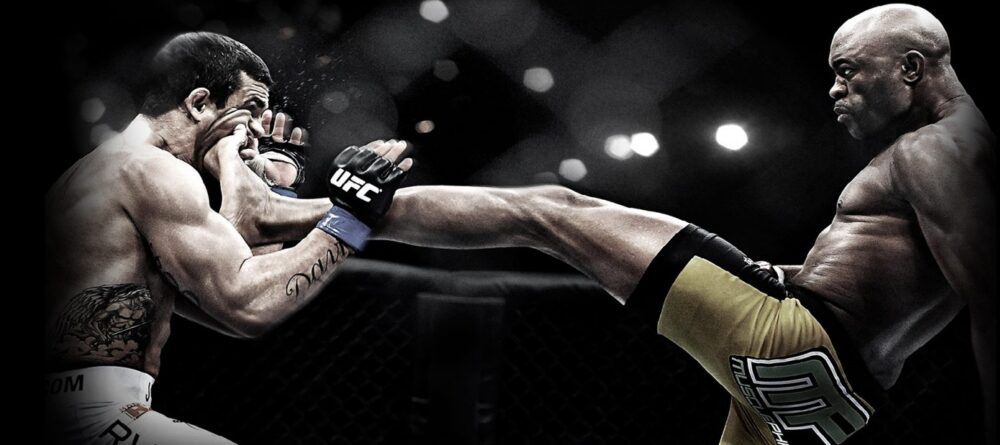The Nunchucks has been a part of the martial arts for centuries, and was made popular by martial arts legend Bruce Lee.
This article will explain what the purpose of Nunchucks are and its history of being used as a weapon for self defense.
The purpose of Nunchucks is to fight enemies. They are mostly used by martial artists, but also by others as a means of self-defense against attackers.
Bruce Lee’s Martial Arts System
What Are Nunchucks?
Nunchucks, also known as nunchaku, are a traditional Okinawan weapon consisting of two sticks, usually made of wood or metal, connected by a chain or rope.
Each stick is typically around 12 to 18 inches long. The sticks are held in each hand, and the chain allows them to swing and rotate freely.
Nunchucks originated in Okinawa, Japan, and were originally used as a farming tool for threshing grains.
Over time, they were adapted into a weapon by martial artists. Nunchucks require skill and practice to wield effectively and can be used for both offensive and defensive purposes.
In martial arts, nunchucks are often associated with styles like Okinawan kobudo and are featured in various forms of entertainment, such as movies and video games.
However, it’s important to note that the use of nunchucks may be regulated or prohibited in some jurisdictions due to their potential as a dangerous weapon.
Best Jiu Jitsu Submissions To Strangle Opponents With
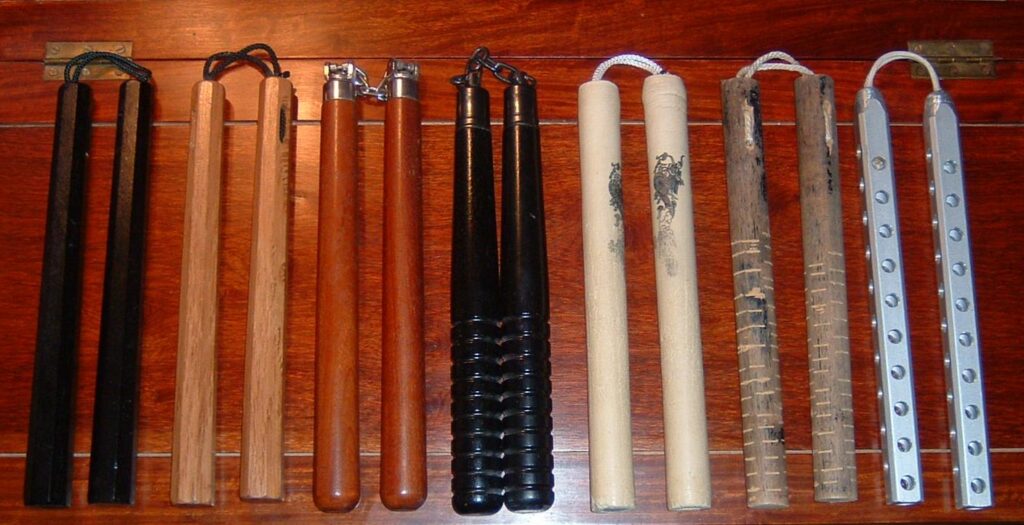
What Is The Purpose Of Nunchucks?
The purpose of nunchucks, or nunchaku, can vary depending on the context in which they are used. Here are a few common purposes:
Martial Arts Weapon: In the realm of martial arts, nunchucks are used as a traditional weapon.
Practitioners train with nunchucks to develop coordination, speed, timing, and precision. They are often utilized to strike, block, trap, and disarm opponents.
Nunchucks can be a versatile weapon when wielded skillfully, allowing for a wide range of offensive and defensive techniques.
Self-Defense: Nunchucks can be employed as a tool for self-defense. With proper training and practice, they can provide a means to protect oneself in certain situations.
The swinging and striking motions of the nunchaku can be used to fend off an attacker, create distance, or disorient them.
Training To Become A UFC Fighter
Performance and Entertainment: Nunchucks have gained popularity in various forms of entertainment, such as movies, martial arts demonstrations, and exhibitions.
Skilled performers showcase their agility and control by performing intricate and dynamic routines with nunchucks, creating visually impressive displays.
It is important to note that in some jurisdictions, the possession and use of nunchucks may be regulated or prohibited due to safety concerns or legal restrictions.
Always make sure to familiarize yourself with local laws and regulations regarding the use and ownership of nunchucks.
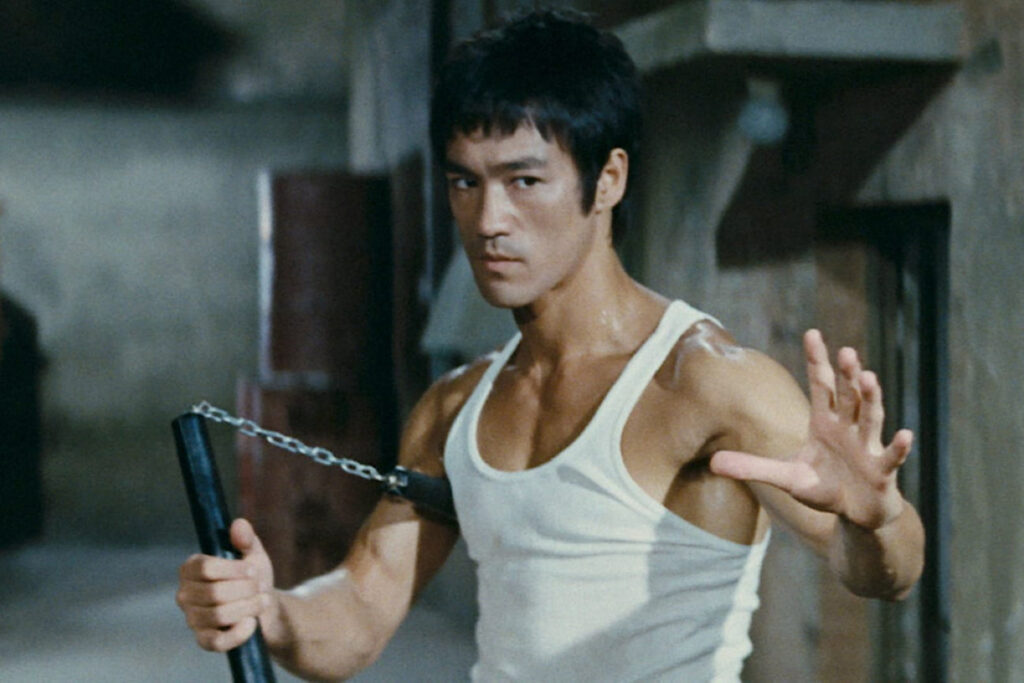
How Japanese Jiu Jitsu Influenced Brazilian Fighters
What Are The Different Parts Of The Nunchuck
1- Handles: The handles, also called sticks, are the main gripping areas of the nunchuck. They are usually cylindrical in shape and can be made of wood, metal, plastic, or other materials. The handles provide a secure grip for the user.
2- Chain or Rope: The handles of the nunchuck are connected by a chain or rope, which allows them to swing and rotate freely. The chain or rope is typically made of metal or strong synthetic material. The length of the chain or rope can vary depending on the nunchuck design.
3- Swivel: At the point where the chain or rope attaches to the handles, there is often a swivel mechanism. The swivel allows the handles to rotate independently, providing fluid motion and preventing the chain or rope from tangling.
4 – Connector: The connector refers to the specific mechanism that attaches the chain or rope to the handles. It can be a solid metal or plastic link, a bolt, or a similar connecting piece.
5 – End Caps: Some nunchucks have end caps on the handles, which serve both decorative and functional purposes. The end caps can provide weight distribution, balance, and protection for the user’s hands.
What Are The Different Types Of Nunchucks?
Continuing our topic on what is the purpose of nunchucks, we come to the section where where we outline the different types of nunchucks.
- Traditional Nunchaku
- Foam Nunchaku
- Light-Up Nunchaku
- Safety Nunchaku
- Metal Nunchak
- Modernized or Modified Nunchaku
Traditional Nunchaku
Traditional nunchaku refers to the classic design of nunchucks used in Okinawan martial arts. They consist of two handles, usually made of wood, connected by a chain or rope.
Foam Nunchaku
Foam nunchaku are often used for training purposes, especially for beginners or those concerned about the potential for injury. They feature foam padding around the handles and sometimes the chain, providing a softer impact when practicing strikes and blocks.
Light-Up Nunchaku
Light-up nunchaku, also known as LED nunchaku, have built-in LED lights that illuminate the handles or other parts of the nunchaku. They are primarily used for visual effects, performances, or demonstrations.
Safety Nunchaku
Safety nunchaku are designed with the focus on reducing the risk of injury during practice or training. They typically have foam or rubber padding on both the handles and the chain, minimizing the impact and potential harm.
Metal Nunchaku
Metal nunchaku, as the name suggests, are made of metal material such as steel or aluminum. They can be heavier and offer a different feel compared to wooden or foam nunchucks. Metal nunchaku are sometimes used in advanced training or demonstrations.
Modernized or Modified Nunchaku
There are various modernized or modified versions of nunchaku that incorporate different materials, designs, or features. These can include nunchaku with collapsible or telescopic handles, adjustable chain length, ergonomic grips, or other innovative elements.
Steps To Become An MMA Fighter
Why Are Nunchucks Illegal
The legality of nunchucks, or nunchaku, can vary depending on the jurisdiction. While nunchucks are legal and widely used in some places, they are restricted or illegal in other regions.
The reasons for the restrictions can be attributed to several factors:
Nunchaku gained popularity and recognition through martial arts movies and demonstrations in the 20th century.
However, this also led to concerns about their potential misuse or association with criminal activities.
Some jurisdictions have implemented bans or restrictions based on a perceived connection between nunchucks and criminal behavior.
Nunchucks can be dangerous if not used properly or in trained hands. Improper handling or lack of skill can lead to accidents or injuries, both to the user and others.
Governments and authorities may restrict nunchucks to mitigate the risks associated with their use.
Lastly, the perception of nunchucks can vary across different cultures and legal systems. While nunchaku have a historical and cultural significance in Okinawan martial arts, they may be viewed differently in other regions.
Cultural and legal perspectives can influence the regulations surrounding nunchaku.
Can You Defend Yourself With Nunchucks?
Yes, nunchucks can potentially be used for self-defense, but it’s important to note that their effectiveness relies on various factors.
These factors include the skill and training of the individual using them and the specific circumstances of the self-defense situation.
Effectively using nunchucks for self-defense requires proper training and practice.
Skillful manipulation of the nunchaku involves developing coordination, timing, accuracy, and control. Without training, nunchucks can be difficult to handle effectively and may even pose a risk to the user.
Self-defense is not solely reliant on weapons. Techniques like situational awareness, evasion, verbal de-escalation, and knowledge of self-defense principles can be effective in many situations.
Physical self-defense should be considered as a last resort when all other options have been exhausted.
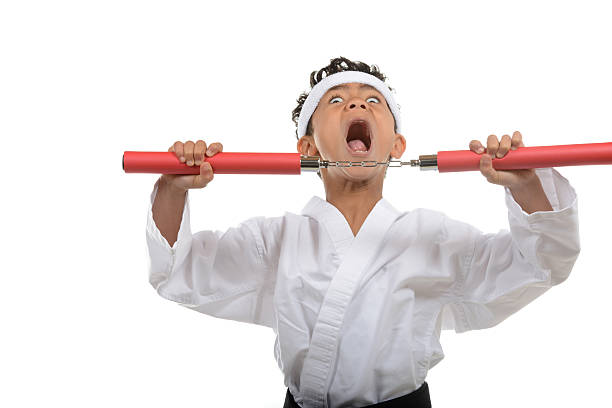
Muay Thai Clinch Takedown Techniques
The Best Nunchucks For Sale
Does It Hurt To Get Hit By Nunchucks?
Yes, getting hit by nunchucks can cause pain and potential injury. Nunchucks, when wielded with force and accuracy, can deliver significant impact to the target.
The severity of the pain or injury will depend on factors such as the force of the strike, the area of the body impacted, and the individual’s physical condition.
The impact of a nunchuck strike can cause bruising, contusions, cuts, or even fractures, particularly if vulnerable areas such as the head, face, or joints are targeted.
It’s worth noting that nunchucks are considered a weapon, and the force applied during strikes can potentially cause harm or serious injury.
It’s important to emphasize that the purpose of nunchucks in martial arts or self-defense training is to develop skill, control, and discipline.
In controlled training environments, precautions are typically taken to minimize the risk of injury. However, in uncontrolled or improper use, nunchucks can be dangerous to both the user and others.
MMA Fighters VS Boxers Who Will Win?
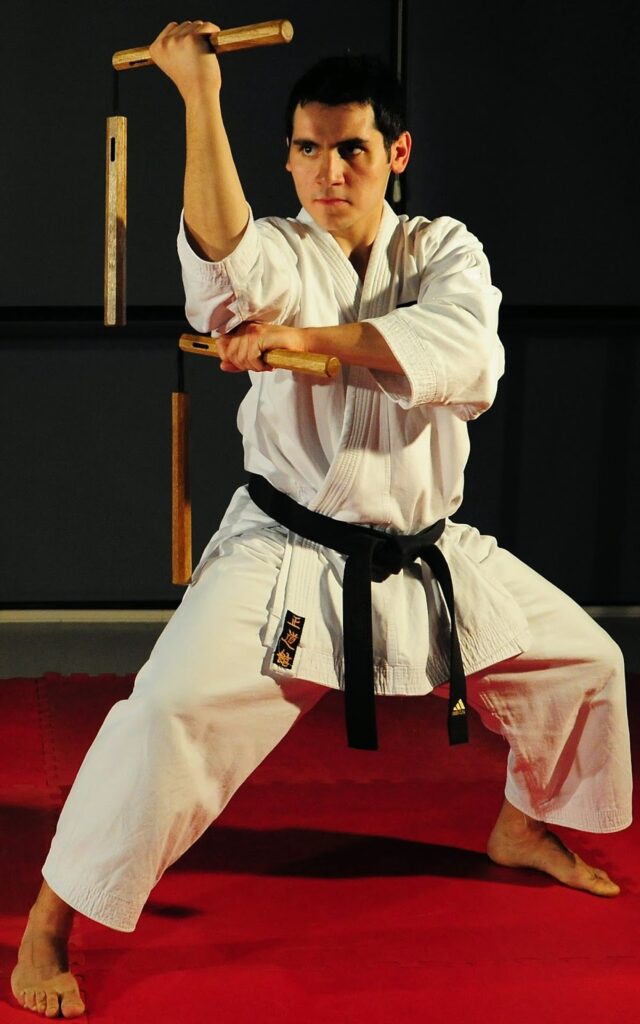
Learn How To Throw A Lead Hook
What Muscles Do Nunchucks Work?
Using nunchucks can engage and strengthen various muscle groups in the body. Here are some of the primary muscle groups that can be worked during nunchuck training:
Forearms and Grip: Gripping and manipulating the nunchucks requires significant forearm strength and grip strength. The muscles in the forearms, including the flexor and extensor muscles, are activated during movements such as rotations, strikes, and blocks.
Shoulders and Upper Back: Swinging and maneuvering the nunchucks involve movements of the shoulders and upper back. Muscles such as the deltoids, rhomboids, and trapezius muscles are engaged to stabilize and control the motion of the arms.
Biceps and Triceps: The biceps and triceps muscles in the upper arms are involved in generating force during strikes and blocks. These muscles are responsible for the extension and flexion of the elbow joint.
Core Muscles: Maintaining stability and balance while using nunchucks requires engagement of the core muscles, including the abdominal muscles (such as the rectus abdominis and obliques) and the lower back muscles (such as the erector spinae). The core muscles provide support and transfer power between the upper and lower body.
Wrist and Finger Flexors: The wrist and finger flexor muscles play a crucial role in controlling and manipulating the nunchucks. These muscles are responsible for flexing the wrist and curling the fingers around the handles of the nunchaku.
Lower Body Stabilizers: While nunchuck training primarily focuses on the upper body, the lower body muscles can also be engaged to provide stability and balance.
Muscles in the legs, such as the quadriceps, hamstrings, and calf muscles, work to maintain a stable stance and support the movements of the upper body.
Who Is The Best In The World With Nunchuks
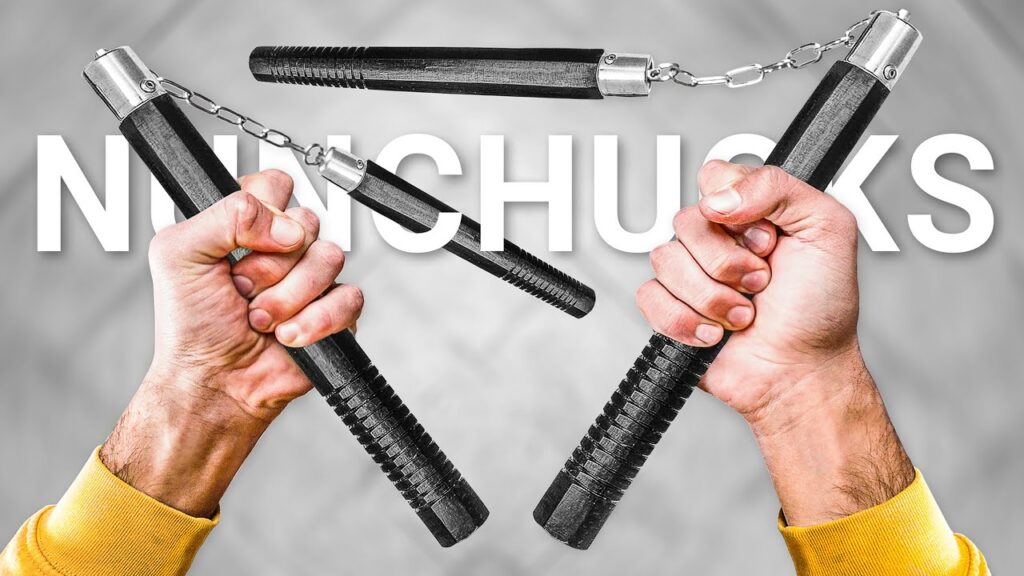
Bruce Lee
His famous nunchaku scenes in movies like “Enter the Dragon” and his demonstration of nunchaku techniques showcased his mastery and contributed to the popularization of nunchaku in the mainstream.
Although primarily known for his expertise in martial arts such as Jeet Kune Do, Bruce Lee was also highly skilled in nunchaku.
Liang Dongfeng
Liang Dongfeng, also known as Bruce Liang, is a Chinese martial artist and actor who is widely regarded as one of the world’s top nunchaku practitioners.
He gained international recognition for his nunchaku skills and his performances in martial arts films during the 1970s and 1980s.
Tak Kubota
Tak Kubota, a martial artist and founder of the Gosoku-ryu style of karate, is renowned for his expertise with nunchaku.
He has dedicated significant time and effort to promoting the responsible use and training of nunchaku and has gained recognition as a leading authority on the weapon.
Grant Campbell
Grant Campbell, hailing from Australia, is a highly skilled nunchaku practitioner who has won numerous world championships in nunchaku freestyle and other martial arts disciplines.
He is known for his creative and dynamic performances that showcase his technical proficiency and innovation with nunchaku.
Is Gracie Jiu Jitsu Like Brazilian Jiu Jitsu?
It’s important to note that there are many skilled nunchaku practitioners worldwide, and the list above represents just a few examples.
Skill levels and expertise can vary among individuals, and there may be talented practitioners who are not as widely recognized.
The best way to determine the “best” nunchaku practitioner for oneself would be to explore different practitioners’ videos, performances, and achievements and form an individual opinion based on personal preferences and criteria.
